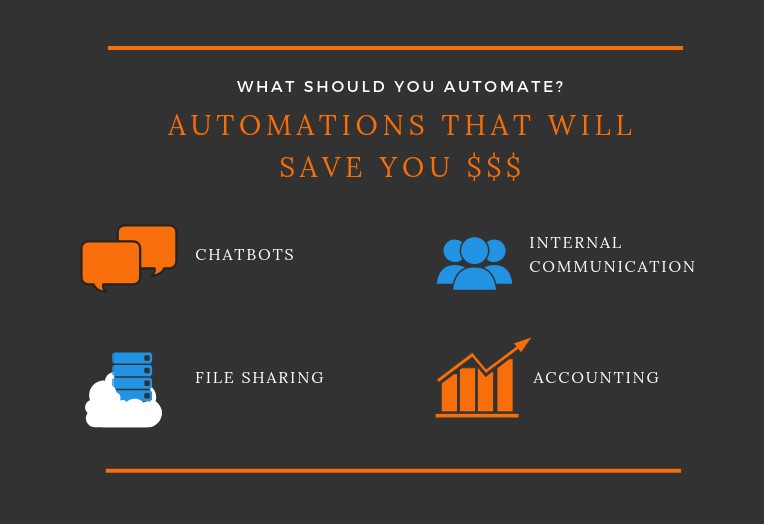How to Use Technology to Reduce Business Costs

The rapid growth of technology and connectivity has changed the game for business owners. The way people do business now is remarkably different from the way it was done just a decade or so ago, and the ripples, or more like tidal waves, of change that technology has brought upon the world of business is one of the major causes for the revolution in business activity.
The technological revolution in business is both a good and a bad thing. It’s bad for business owners who have long-established processes and routines because they will have to make major upgrades to their system in order to adapt. For smaller businesses and startups, however, technology has allowed them to gain a foothold in their respective industries and actually be able to compete even without the resources that established companies have.
The massive impact of technology on business can be seen in a multitude of ways. Consider these statistics from Insight.com about small business technology:

- In 2015, spending on technology by small businesses increased by 50%
- 92% of small businesses rely on at least one cloud-based solution to run their business
- Cloud-based solutions have been reported to increase efficiency by at least 42%
- 66% of businesses rely on wireless technology and mobile devices to run their business
Where does technology come into play in business? For the most part, tech is used to simplify and shorten processes and, more recently, for online marketing. However, there’s one more aspect of business where tech can make a major impact: reducing business costs.
How to Use Technology to Reduce Business Costs
If you’re thinking of novel ways to reduce operating expenses in business, it’s advisable to bring technology into the mix. By ushering in new tools, apps, and software, you can come up with cost reduction ideas that you might not have considered before.
Typical cost-cutting ideas include reducing the number of your employees or using cheaper materials, consequently sacrificing the quality of your products, but it doesn’t have to be this way. With the help of modern technology, you can answer the question of how to cut cost in a company without sacrificing your processes or your product or service quality.
Here are a few ways to leverage technology in order to reduce operational costs.

-
Use VoIP over landline
VoIP, or Voice over Internet Protocol, isn’t exactly a new thing. In fact, it’s been around for years. However, many businesses are still reluctant to make the switch from regular landlines to VoIP. When VoIP was first introduced, this indecision was warranted. The tech was new and untested, not to mention that the costs were still high. These days, however, VoIP has proven to be just as reliable as your regular old landline phone, and it certainly brings a ton of added benefits.
For starters, VoIP now costs a lot less to set up compared to landlines. It also has built-in mobile functionality, so you don’t need individual phones for you and your employees to use. This means that you’re not restricted to using the same office, which then potentially allows you further operational cost reductions. In terms of functionality, VoIP also brings more to the table with many providers offering advanced call routing, third-party app integrations, instant messaging, and many other features that landline providers can’t offer.
Another major advantage of VoIP systems over landlines is their scalability. As your company grows, your VoIP system can easily grow with you without upgrading any hardware or adding more physical lines.
-
Automate, automate, automate!
Business process automation is integral to reducing operational costs in the business. The more processes you automate, the more time, money, and effort you save. You might not have noticed it yet, but most of the processes involved in the business are tedious and repetitive. This means that they are perfect candidates for automation.
Automation can be applied to almost any part of the business process, from accounting to marketing to sales to customer service, and so on and so forth. Here ar the best ways to reduce business expenses:

-
-
- Chatbots – many customer inquiries can be answered by copying and pasting a canned response. This is why chatbots are so useful. Instead of having a customer service agent answer each and every chat message that comes through your social media pages or website, you can set up a chatbot that’s smart enough to address the most common questions from your customers.
- File sharing – instead of emailing files back and forth, use a cloud-based system so that you don’t have to download and re-upload files again and again in order to share them with your team. Doing this also allows people to edit a document simultaneously and see each other’s changes in real-time.
- Internal communication – some messaging services can automate updates whenever you do a certain thing such as upload a file on your cloud drive, finish a task on your company CRM, or update a particular spreadsheet. Set up these automated notifications to ensure constant and regular updates and ease up the burden of repetitive communication.
- Accounting – there are many SaaS (Software as a Service) tools that you can use to manage your accounting. From time tracking to payroll generation, invoicing to bookkeeping and taxation, these tools can really cut down the time you or your accountant spends on making sure your finances are in check. Another great benefit of automating your accounting? Automation minimizes the risk of human error, so you can rest assured that the numbers on your reports and ledgers are as accurate as possible.
-
-
Work remotely
There are many benefits to working remotely. These range from avoiding a stressful commute, setting up the perfect work environment, and taking much less time to go to work. In terms of cost-effectiveness, having you and your team work remotely allows you to give up the probably very expensive office space you’re renting. With so many online collaboration and communication tools these days, maintaining a cooperative and engaging atmosphere is possible even for a remote team.
In order to effectively implement remote working, you need to make sure that you and your team are equipped with the right tools. This includes a solid communication system where you can chat, call each other, and even video conference as needed, a cloud-based file sharing and file collaboration system, and of course, the right hardware, including a reliable headset, microphone, and webcam setup.
Encouraging remote work can also help you increase turnaround times. Since your team can be mobile, they don’t have to actually be in the office before they can respond to your calls or emails. This increases productivity and efficiency for your team as well.
-
Hire overseas virtual assistants
Subcontracting work is nothing new in business, but with the help of technology, outsourcing work overseas has become not just feasible, but highly advisable as well. There are virtual assistants and freelancers all over the world who can provide you with the same level of skill as local workers but at a fraction of the cost. Since these overseas virtual assistants (VAs) usually work in countries where the cost of living is lower, they are able to charge a much lower hourly rate as well compared to local workers.
Pro tip: if you’re new to virtual staffing, it’s best to source your VA from a reliable virtual staffing agency. Not only will this assure you of the quality, accountability, and trustworthiness of your VA, it will also take off the burden of HR, accounting, admin, and even training duties from you.
Another tip to remember is to make sure that you have a good process in place when it comes to onboarding and monitoring your VA. This will make the hiring and transition process a lot easier and will help ensure your success with every new VA you hire.
-
Invest in team management or project tracking software
Are you used to using chat or emails to communicate everything in your company? It’s time to step it up a notch and invest in team management, workflow, or project tracking software. These types of software allows you to create and assign tasks, group them according to teams or projects, monitor the progress of each task, store relevant files and URLs in an easy-to-access manner, and so much more. There are so many variations of this type of software, so you can be sure that you’ll find the perfect fit for your company. Don’t know where to get started? Check out this article comparing 4 project management tools.
To Sum Up
Reducing operational costs in business can be tricky, but with the help of modern technology, it’s definitely possible to minimize the cost of doing business without giving up any major parts of your company. By automating several aspects of your business and outsourcing some tasks to overseas virtual assistants, you can scale your business and stay within budget at the same time.
Ready to look into virtual assistant services to reduce business costs? We’re happy to help! Schedule a free, no-obligation consultation call with us and let’s discuss your virtual staffing needs.










